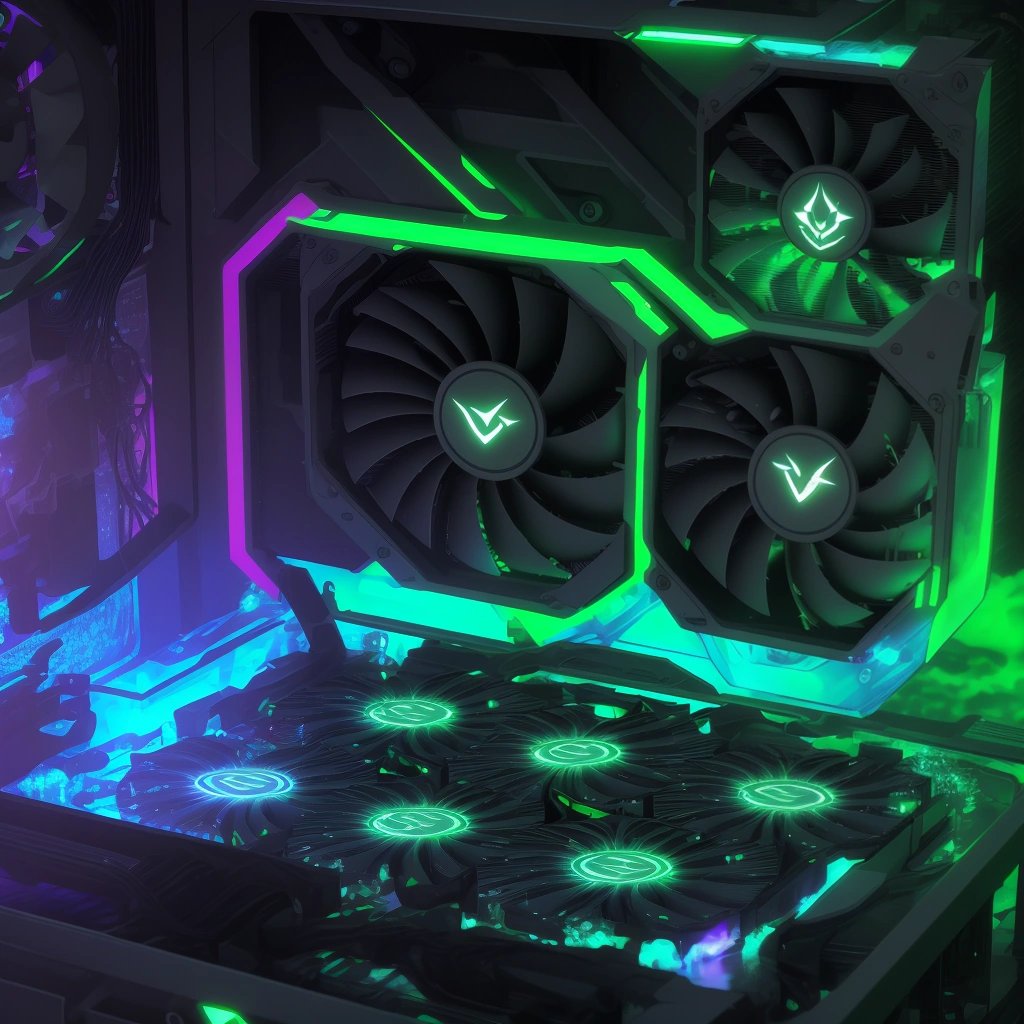In a startling turn of events, NVIDIA has unveiled their latest line of graphics cards, the RTX 6090 series, but with a surprising twist. These powerful GPUs are set to revolutionize power generation by utilizing thermonuclear fusion technology. Yes, you read that right, folks, your gaming rig could soon be responsible for producing clean and limitless energy for the entire world. It's a bold move by NVIDIA, but one that comes with an unexpected requirement—the need for copious amounts of cryofluid coolant.
The RTX 6090 graphics cards, boasting unparalleled performance and mind-boggling ray tracing capabilities, have now ventured into uncharted territory. No longer confined to gaming or rendering stunning graphics, these GPUs have taken on the task of solving the global energy crisis. And they're doing it in style.
With the power of thermonuclear fusion harnessed within the RTX 6090, the potential for clean and sustainable energy is within reach. Imagine a world where your gaming sessions not only immerse you in virtual worlds but also power entire cities, making you the ultimate hero in both reality and the digital realm.
But, of course, with great power comes great responsibility. And in this case, it also requires an abundance of cryofluid coolant. You might be wondering, "What on earth is cryofluid coolant, and why do these graphics cards need it?" Well, dear reader, let us enlighten you.
Cryofluid coolant is an extraordinary substance that is crucial in maintaining the delicate balance of temperature within the RTX 6090 graphics cards. It is a supercooled fluid that ensures optimal performance and prevents the GPUs from overheating during the rigorous process of power generation.
To put it simply, the RTX 6090 graphics cards run hot—really hot. The power required to achieve thermonuclear fusion is immense, and without the cryofluid coolant, these cards would go up in smoke faster than you can say "overclocking disaster." So, NVIDIA has turned to this supercooling solution to keep the GPUs running smoothly and prevent any meltdowns, both figuratively and literally.
But where does all this cryofluid coolant come from, you ask? Well, it turns out that NVIDIA has partnered with yet another unexpected industry: the frozen dessert industry. Yes, you heard that right. The very same companies that supply ice cream and frozen yogurt to satisfy our sweet cravings are now tasked with providing the necessary cryofluid coolant to keep the RTX 6090 cards churning out power.
This integration between the gaming and frozen dessert industries has sparked a flurry of collaboration and innovation. It's quite the sight to behold—an ice cream truck filled to the brim with cryofluid coolant pulling up to a state-of-the-art power generation facility. Who would have thought that the key to saving the planet would be found in the same freezer aisle where you choose your favorite flavor of ice cream?
As exciting as this collaboration may be, it does pose some challenges. Imagine the logistical nightmare of transporting and storing massive quantities of cryofluid coolant. Freezers and refrigerated trucks are now in high demand, with cryofluid coolant becoming as precious as gold. Ice cream enthusiasts may also find themselves vying for limited freezer space as it gets repurposed for the storage of this crucial coolant.
Despite these challenges, the potential benefits of the RTX 6090 graphics cards and their cryofluid coolant requirements cannot be overstated. We are on the cusp of a groundbreaking era where gaming and power generation converge, offering a glimmer of hope in our quest for a sustainable future.
So, gamers and eco-warriors alike, rejoice! Your next gaming session could be an epic power-generating adventure. Just make sure you have enough cryofluid coolant on hand, because in this brave new world, cooling your graphics card is no longer just about staying frosty—it's about powering the world with a deliciously cool resolve.



